The First United Methodist Church of Arroyo Grande Celebrates 125 Years of Ministry
Rock founded, Christ centered, Faith sustained
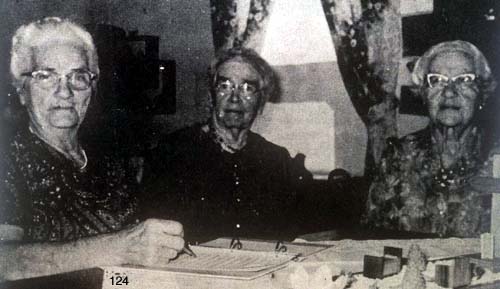
This 1968 photo shows three charter members of the Woman's Society of Christian Service, formed in 1940. Mrs. Leland (Bernice) Ballagh, Miss Minnie Burgan and Miss Fannie Hodges. They are signing the charter to form United Methodist Women in 1965.
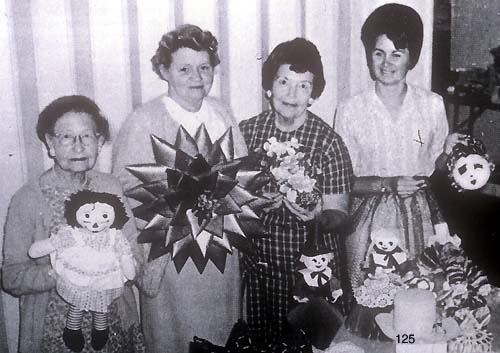
Boutiques have become fundraisers for the society. This is a 1968 photo with Jeanne Andrews, Lillian Hall, Mrs. Harold Martin and Nancy Richmond showing items for sale.
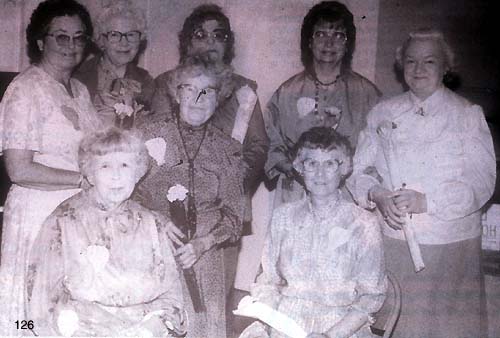
This shows the 1984 President Susan Potts and past presidents. Back row: Ailene Montgomery, Bonnie Knight, Wilma Dixon, Sue Baker. Front row: Myra Viau, Essie Runkle and Vera Lybarger.
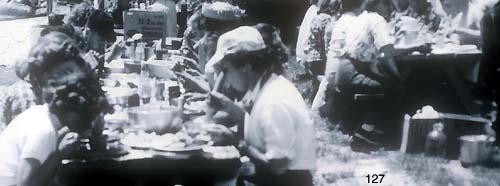
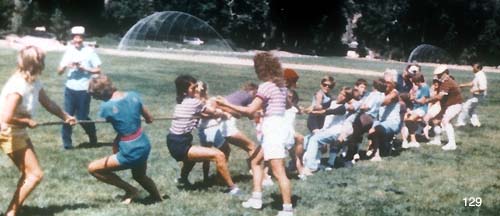
In 1946, John Wesley Grande, who was a good friend to the youth, was pastor. When he ran into trouble in 1948, the Youth Fellowship sent a special letter asking that he be asked to stay. There were many youth activities. One of them, very popular with them, was the baseball team, known as the Juvies and Seniles. There were weiner roasts, beach parties, skating parties and Christmas caroling hay rides.
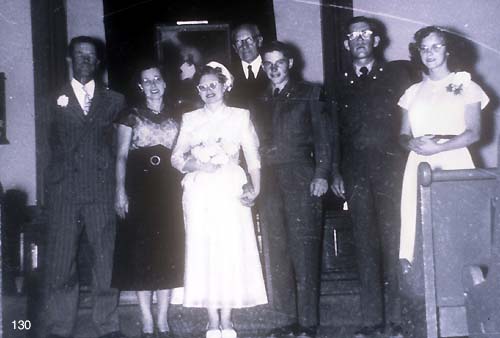
1948, Carl Arthur Wahlquest comes here. Characterized by one as a dear, shy old man beloved by everyone. He was a veteran of WW I and II. He can be seen here in the background of Arleene McOscar's wedding on August 25, 1951.
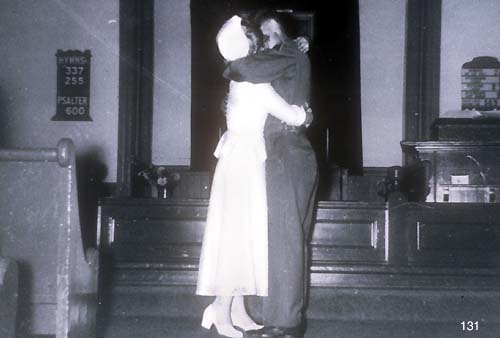
A 1951 wedding.
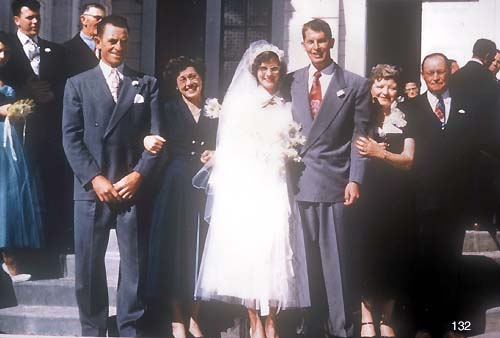
A church wedding is the dream of every girl and her mother. The old church and her lovely interior lent themselves well to these social occasions. Barbara McOscar married Bob Hawley in 1953, that's Walt and Prescilla on the left.
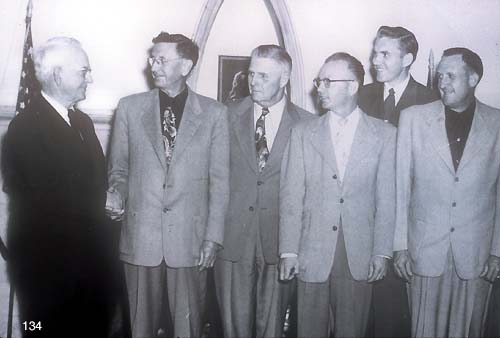
The Methodist Men organized in 1952. Alpheus Hood congratulates President Leslie Oliver, Gordon Dixon, Sidney Horner, Chester Landreth and Charles Harry Whipple, Pastor.
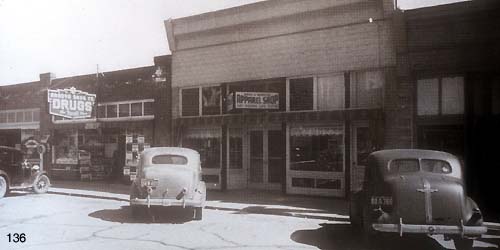
Arroyo was growing. Branch Street had been paved and the vehicles were now cars.
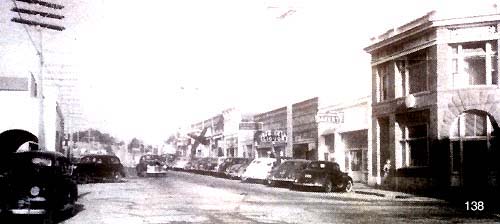
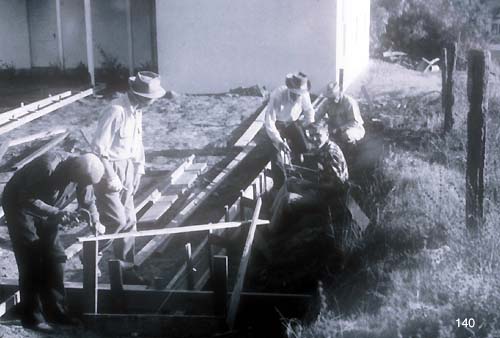
It was decided in January 1949 to build the new Memorial Education Building. In this photo, Pop Whitlock, Pastor Harry Whipple, Joe Gibson, and Gordon Dixon are at work on the project. These buildings are back of the old church site in the Village.
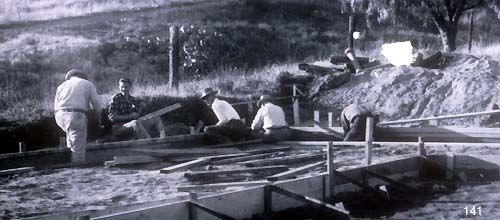
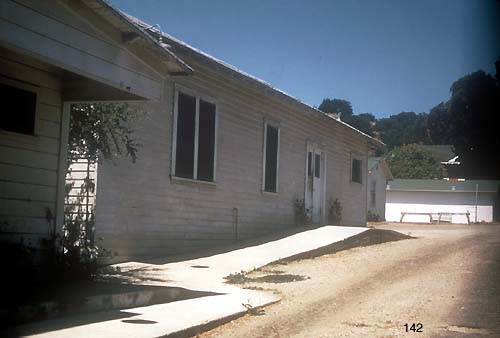
Here is a photo of that completed addition.
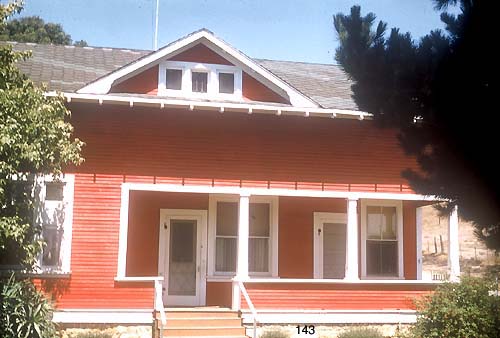
Here is another view of the parsonage in her red paint.
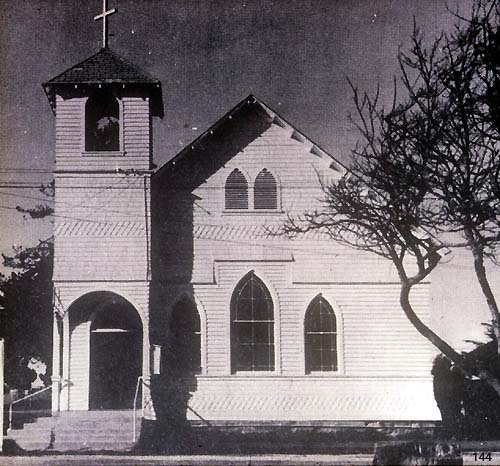
Early in 1902, a Methodist Church was built in Oceano. Some of the pastors did dual service. In 1946 it became a Community Church, called the Oceano Church of the Open Door.
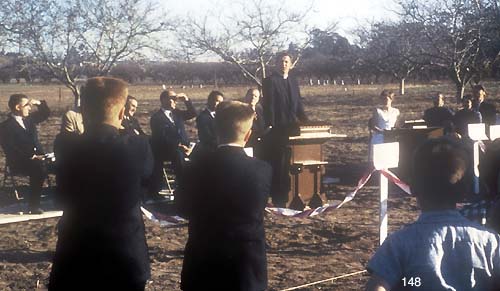
December 5, 1959, groundbreaking of the new church property. The old church property had sold in November to Art and Elaine Garey, and was now being rented from them.
1940 - 1959
Text by Jean Hubbard
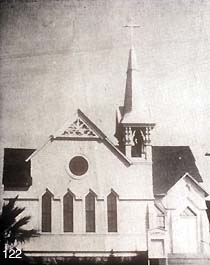
In 1942, Morris Singer was pastor. He was a Jewish lad who had been reared in a foster home. He held Sunday evening services and had many social gatherings for both young and old. He had a way of involving people. It is a sign of the times that in 1944, treasure Joe Gibson announced the church needed $200 a month to meet expenses.
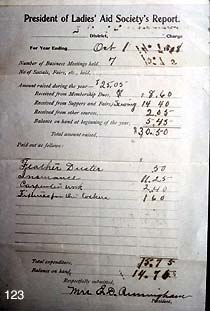
Let us consider for a moment the Women's Aid Society. Called the Ladies Aid in the early records, they raised a 'goodly' amount of money. In 1959 they became the Women's Society of Christian Service (this from their minutes on August 15, 1940). Mrs. Lulu Phillips called a meeting of the Woman's Aid Society. Mrs. Skyrock moved and Mrs. Jessie Schultz seconded the motion that the Woman's Aid Society be adjourned and a charter meeting be called for the forming of the Woman's Society of Christian Service on Sept 4, 1940.
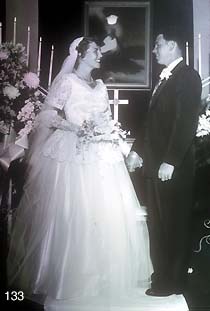
Sally Dixon married James Dickens, September 5, 1954. Their son Jim was a Councilmember. Note the picture in the background, it now hangs in the McMillen Room. On Mother's Day, May 8, 1936, this painting was presented to the church by the Japanese Community and was displayed on the wall behind the pulpit in the church in the village for many years.
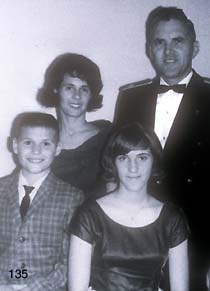
Rev. Whipple had come here as pastor in 1952. Their first child was born in the parsonage. After two years he resigned to accept a commission in the Air Corp as chaplain.
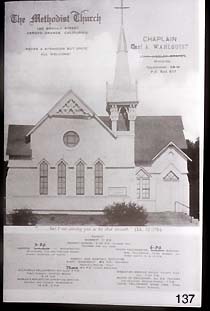
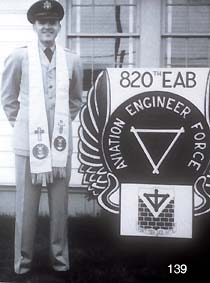
Harry Whipple was killed while in the Service and the pulpit in the Sanctuary is a memorial to him.
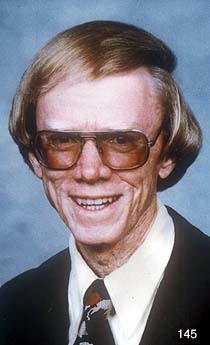
1954 Robert E. Laird was assigned here. He came with the population explosion. Membership was growing rapidly. His last year wasn't a happy one owing to the division over building a new church.
November 14, 1957 a special Quarterly Conference gave their consent to the purchase of two acres at Walnut and Halcyon Streets, just outside the city limits of Arroyo Grande and south of the cemetery.
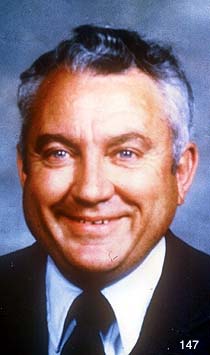
1959 M. Kenneth Criswell became pastor. Following the unhappy leave taking of Rev. Laird, Kenneth Criswell inherited the job of carrying on the building of the new church.
The Japanese Community of this Church
by Dave Beaman
Over the years of our church history there has been considerable interaction with members of the Japanese Community. A recent interview/discussion with Mr. Kaz Ikeda and some members of our church; Jean Hubbard, Gladys and Bill Paulsen and I, helped clarify some details of interest.
Kaz was born in King City, CA in 1918 when his father worked at Speckles' Sugar. At a very young age he, along with his mother and some of his siblings, traveled to Japan to attend school to learn the traditional Japanese customs and language. He returned before age 6 when the family moved to Arroyo Grande in 1929 where they worked as vegetable farmers. His father, and many other Japanese families, wanted the children to become Christians. They found the Methodist Church in the village to be friendly and welcoming, especially in the Sunday School classes for the children.
One particularly interesting item, identified in the research of church historian, Jean Hubbard, is the water color copy of an original painting by the artist Hoffmann, “Christ In Gethsemane” that currently hangs in the McMillen Room (see picture #133 above). On Mother’s Day, May 8, 1936, this painting was presented to the church by the Japanese Community and was displayed on the wall behind the pulpit in the church in the village for many years.
The period after Pearl Harbor and during WW II was a very traumatic time for the Japanese and for American citizens. Each side had very strong feelings of victimization or patriotism and very great distrust of one another. The fear for the potential of west coast invasion of the US led to government decisions which caused major disruption of the Japanese families. Many were ordered to report to Assembly Areas. They hand carried all their belongings for transport to Relocation or Detention Camps far away their San Luis Obispo county homes. In light of this, some Japanese men did in fact serve in the US Armed Forces such as 442nd Division. Many, like Kaz, were American citizens swept up in the throes of wartime. After the war was over many never returned. Those that did, had to start their lives all over again.
In the middle and later years of the 1960s our current church building, at 275 North Halcyon Road, was under construction and members of the Japanese Community participated in that work with carpentry and labor. Also, they specifically donated and graded all of the installed landscaping as a contribution to the building project.
During the years when the church held those unique, all-day, Deep Pit Barbecue fund raising events the Japanese Community always supplied, made and mixed the massive amounts of salad required to fill the plates of the hungry congregation and loyal community customers.
Kaz openly reflected how in these more recent years, the local Japanese Community numbers have diminished considerably from the time of his youth. We want them to know we respect and appreciate their ethics, manners, loyalty and historical heritage. Especially the association we happily share. "Christ In Gethsemane" is the title of this painting by Hoffmann which hangs in the McMillen Room.
























